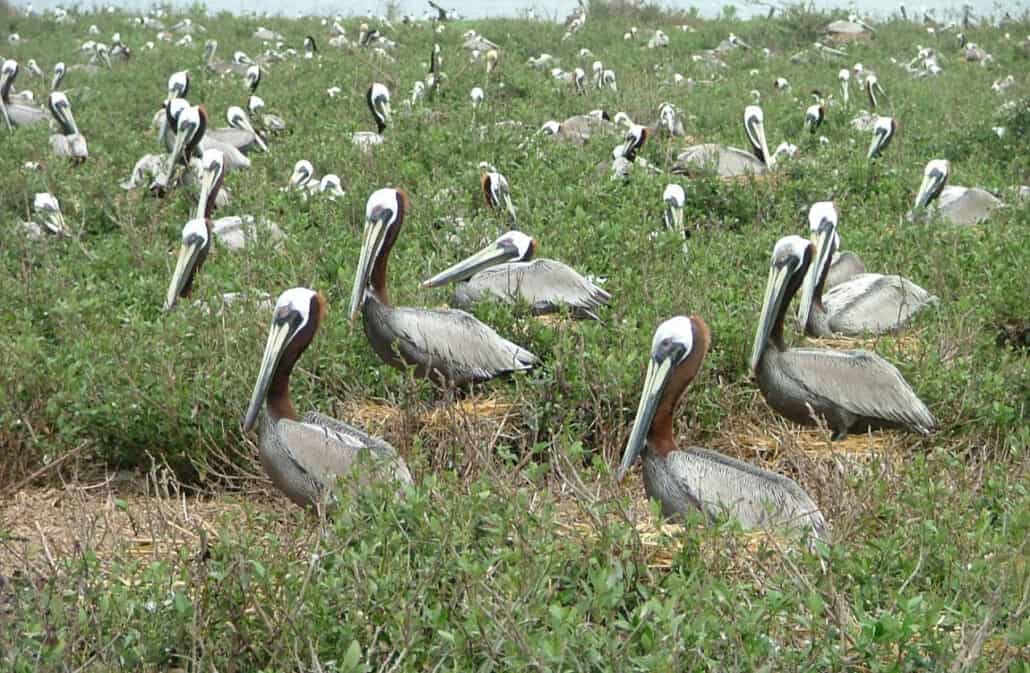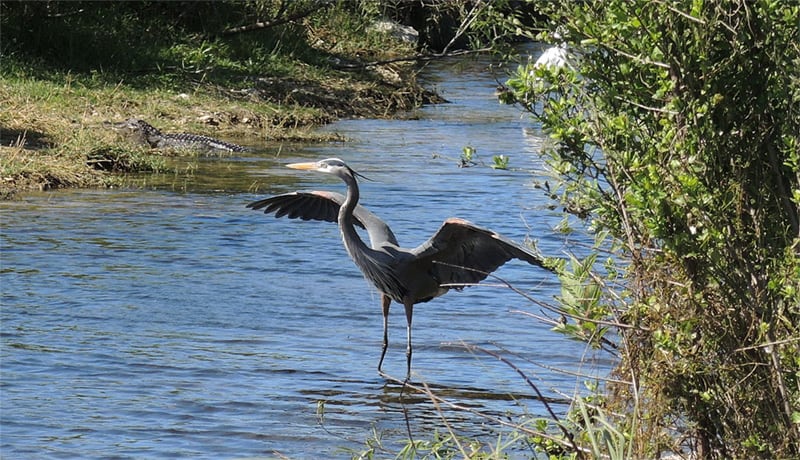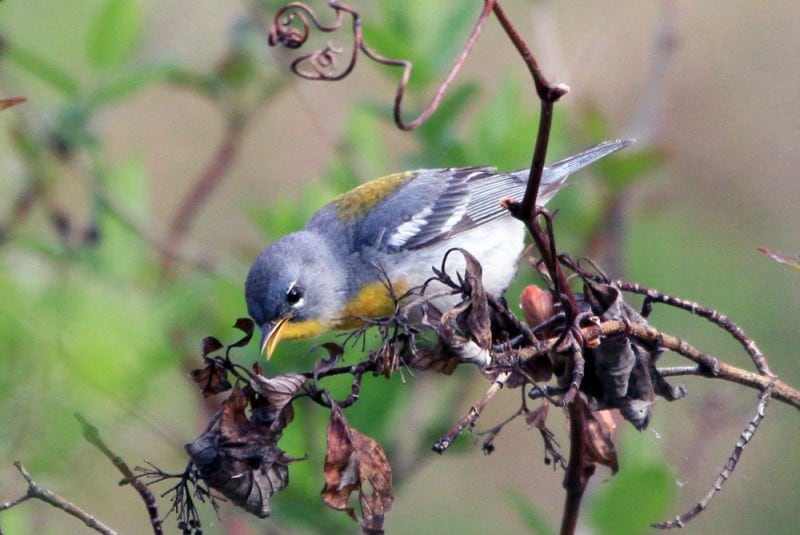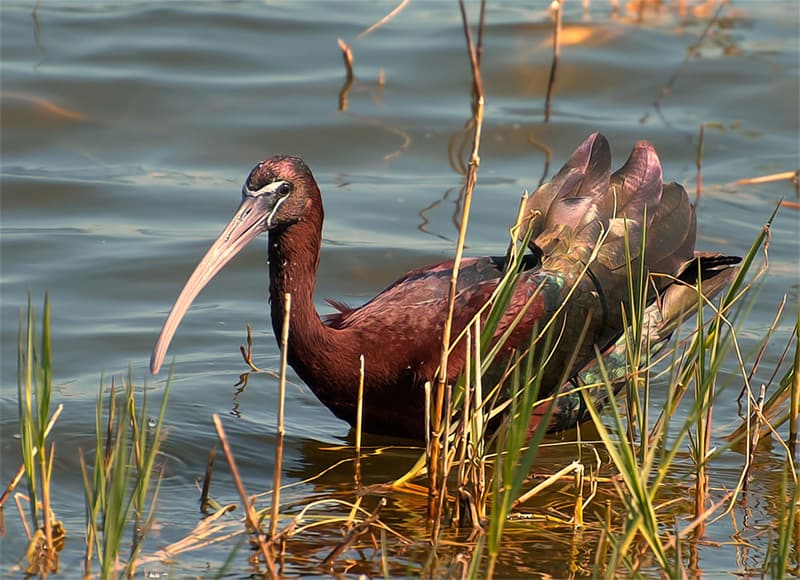Southern Louisiana’s vast coastal zone encompasses more than 14.5 million acres of woodlands, grasslands, and water. The soils of the coastal zone average a mind-boggling 20,000 feet in thickness—an enormous sheet of Pleisotocene/Holocene mud resulting from 1 million years’ worth of alluvial outputs of both the Red and Mississippi Rivers.
At the very top of this mud sheet, the mucky surface soils upon which we work and play today average a mere 4,000 years in age. Topographically, the zone is mostly flat, but tilts seaward from about 50 feet in elevation along its northernmost boundary, down to about 5 feet at its juncture with the Gulf of Mexico.
What little undulation that remains in the land is a byproduct of a maze of ancient abandoned riverbeds and natural levees which coursed through the region at various periods of the Pleistocene. Closest to the coast, the surface soils originate from marine sands and clays contributed by the Gulf of Mexico itself, constantly deposited and reworked by high-tide events like tropical and winter storms.
Ecologically, Louisiana’s coastal zone is a vast conglomeration of rivers, bayous, lakes, deciduous forests, swamps, moist prairies, and marshes that range from totally fresh to highly saline. During the past 250 years, agriculture has laid a fairly heavy footprint upon the region, as have oil and gas exploration and production.
More recently, the heavy footprints have come from a series of headline-grabbing catastrophes. Still, the biggest player in shaping the coastal zone has always been water, both fresh and salt.
Since the beginning of the 21st century, the coastal zone has suffered the most devastating blows in its recorded history, from sources both natural (hurricanes Katrina, Rita, and Ike, along with the Great Flood of 2011) and human made (the BP oil spill of 2010). Yet nature has proven itself resilient.
The semitropical climate and naturally high rate of fecundity here have overpowered these environmental setbacks, digesting the pollution and storm debris and regrowing the vegetation to heal the scoured marshes, swamps, and woodlands.
Furthermore, coastal restoration funding has finally begun to trickle in to address the zone’s most pertinent environmental issue: land loss. Sediment diversion and barrier-island restoration projects have been in the planning stages for years, and now with increased funding are set to begin in earnest.
It’s worth noting that in many cases, agricultural and industrial developments within the zone have actually provided substantial enhancements for the massive wildlife community that resides here. Raised levees and dikes carry sheltering hardwoods deep into the marshes and swamps, as do agricultural canals and their accompanying hedgerows—all of which provide much-needed nesting and overwintering habitat for hundreds of bird species, especially wading birds and songbirds.
Rice and crawfish (that’s how we spell it down here) production dominates the western half of the coastal zone, resulting in unexpected but welcomed sources of nutrition and shelter for all animal groups, including wading birds, waterfowl, raptors, shorebirds, and more.
Despite its recent history, Louisiana’s coastal zone remains one of the most ecologically dynamic places in the world. It is still the seventh largest deltaic system on the planet, and it still accounts for nearly 40 percent of all the estuarine marshes in the Lower 48. And from a bird-watching perspective, it remains one of the few places where, for at least nine months of the year, seeing 100-plus species a day is the rule, not the exception.
Louisiana’s local and visiting birding community has carried on unflinchingly, perhaps motivated more than ever to get out in the field and report its findings. Additionally, professional bird observers have been hired by several academic and governmental groups to monitor birds.
We remain cautiously optimistic. We’re helping out wherever we can. And as always, we’re celebrating life with our own special brand of food and music, and our open-hearted, nature-loving culture.
To what we constantly hear others call “Joi de vivre,” we reply, “Come get you some!” To get you started, here are descriptions of Louisiana’s top coastal zone birding areas, selected for easiest/safest accessibility and year-round “birdability.”
Bayou Sauvage NWR, Big Branch Marsh NWR, Pearl River WMA, and Lake Ponchartrain Lakefront
Just minutes from downtown New Orleans, Bayou Sauvage NWR hosts marsh, open water, and bottomland hardwood habitats. Hit hard by hurricane Katrina’s tidal surge, the bottomland hardwoods were mostly destroyed. Presently, the old forested areas are undergoing early-succession ecological recovery, featuring dense undergrowth of groundsel bush, wild hibiscus, passion vine, and other rank vegetation that serves as excellent shelter for songbirds.
The marshes sections are intact, and host the usual community of wading birds as well as black-bellied whistling ducks. The Ridge Trail Unit has an excellent raised boardwalk trail system with observation areas overlooking all major habitat types.
Those interested in seeing red-cockaded woodpeckers can continue north to Slidell to Big Branch Marsh NWR, where one or more colonies can be reliably observed. From May to July, those interested in swallow-tailed kite should visit the Pearl River WMA just northeast of Slidell.
In winter, the Lake Ponchartrain lakefront should not be overlooked. It can be accessed from both the north and south shores via numerous parks and boat launches. Many species of diving ducks and grebes, as well as the occasional scoter and long-tailed duck, use the lake in winter, as do bald eagle and osprey.
Jean Lafitte National Historical Park Barataria Preserve
This site is about a half-hour south of downtown New Orleans, and is within the historical hideout of the pirate Jean Lafitte. Numerous descendants of his crew of “Baratarians” still live around here and on Grand Isle. The park boasts a fine visitor’s information center and hard-surfaced trail system through a mesmerizing 20,000-plus acres of interlaced cypress swamps, marshes, and riparian forest—all largely spared from Katrina’s worst.
The unit’s bird list sports nearly 270 species, including most all of the water birds mentioned throughout this article, as well as a long list of forest raptors, woodpeckers, and songbirds.
Grand Isle, Port Fourchon, and Elmer’s Island
Grand Isle is Louisiana’s only inhabited barrier island. It supports lots of accessible beach, dune/scrub, marsh, and forest habitat. The live-oak-dominated maritime forest is the centerpiece of almost year-round birding activity, with several tracts managed by The Nature Conservancy. The forest hosts most of eastern North America’s migratory songbird species during spring and fall migration, as well as rarities such as black-whiskered vireo.
Beaches can become crowded in spring, summer, and fall (especially on weekends), but the beach/dune complex at Grand Isle State Park on the eastern end of the island is never as crowded. It has a nice walkway system through dune and marsh habitats that terminates at the beach.
The best salt-marsh observation areas—for finding seaside sparrow, clapper rail, short-billed dowitcher, long-billed curlew, and whimbrel—are on the north, or “bay,” side of the island. The raised boardwalk at the Grand Isle Port Commission is best.
Shorebirding is almost always good at Grand Isle, but scope-equipped shorebird enthusiasts will definitely want to stop at Port Fourchon, about 8–10 miles before crossing the bridge onto Grand Isle. There’s a mix of marsh, dune, and shallow open water here in a large, industrialized oilfield service port.
The shallow water impoundment holds the most interest. Unfortunately, viewing is mostly from the roadside, with frequently passing 18-wheelers, but thankfully they’re driving slowly. In the latter half of April, bobolinks, orioles, and buntings stream through the grassy, shrub-dotted dunes.
Elmer’s Island is a must for shorebirds and seabirds. This long barrier peninsula enfolds a large salt lagoon and mudflat habitat, usually teeming with plovers, sandpipers, and many other shorebirds, including the declining red knot in late April or early May. The beach at Elmer’s Island is usually less crowded than at Grand Isle, and more birds seem to congregate there as a result.
Atchafalya NWR, Sherburne WMA, and South Farm
These three sites together cover tens of thousands of acres of bottomland hardwood forest, cypress swamp, open river, bayous, and small lakes. Birding is excellent year-round and especially in late spring and summer when the sheer density of nesting wading birds, woodland raptors, woodpeckers, and songbirds is astounding. Perhaps the best locale is along LA 975 (Interstate 10 at exit 127) north along Atchafalaya NWR and up into Sherburne WMA. Most birding is done along the roadside.
Eight miles farther east on Interstate 10, follow the service road north onto the Atchafalaya basin’s eastern containment levee and turn left into the South Farm Unit parking area. South Farm is owned by the Army Corps of Engineers and managed by the Louisiana Department of Wildlife & Fisheries.
It offers easy woodland birding as well as an observation deck over a large swampy impoundment where wood stork, roseate spoonbill, and other wading birds and waterfowl congregate. All visitors to any Louisiana Department of Wildlife & Fisheries-managed site must possess a hunting or fishing license or a “watchable wildlife” permit. Call 888-765-2602 for more information.
Cypress Island Preserve
The Nature Conservancy’s Cypress Island Preserve is about five miles east of Lafayette (the undisputed Cajun Capital of the World, offering loads of Cajun food and music). Cypress Island features nearly 10,000 acres of bottomland hardwood forest interlaced with old-growth live-oak ridges, as well cypress-tupelo swamp that lines Lake Martin—the site of the most accessible mixed-species wading bird rookery in the state.
Bring your camera, especially from March through May, and watch birds around the visitor center, raised walkways, and lakeside trail. Prothonotary and yellow-throated warblers and northern parula nest here, and there is an excellent songbird population year-round.
Southwestern Louisiana “Rice Country”
The rice country is hard to beat. Acre after acre of rice and crawfish production attracts water birds of all types. Some of the more sought-after “regulars” (in appropriate season) include white, glossy, and white-faced ibis, roseate spoonbill, wood stork, fulvous whistling-duck, Ross’s goose, yellow rail, 30-plus species of shorebirds, gull-billed tern, short-eared owl, marsh wren, sedge wren, LeConte’s sparrow, and lapland longspur.
During migration and in winter, hedgerows fill with songbirds. Hawks and falcons densely populate this area in winter. Observers with spotting scopes can pick out nearly every geographic variant of red-tailed hawk here, plus rarities such as white-tailed, Harris’s, and ferruginous hawks, as well as others.
Almost all rice country birding is by roadside, with the best access via LA 35 (exit 87), LA 13 (exit 80), and LA 99 (exit 54) off Interstate 10. The best birding tends to be south of Interstate 10, between I-10 and LA 14.
Pulling off and parking along busy state roads is never a good idea. Instead, find small side roads with suitable pull-offs. Take care not to wander too far from your vehicle, and avoid blocking field access for local tractors and other farm equipment. The farmers are usually friendly toward bird watchers as long as they don’t impede their work.
Lacassine NWR and Cameron Prairie NWR
Lacassine NWR comprises nearly 35,000 acres of marshes, open water, agricultural fields, cypress-tupelo gum swamp, and restored tallgrass prairie. The two-mile Wildlife Drive around Lacassine Pool at the terminus of Illinois Plant Road is outstanding at any time of year.
Cameron Prairie NWR to the southwest also has a fine wildlife drive called Pintail Drive. Together, these two refuges are probably the best places to observe mottled ducks, which are easiest to find in April–October when they’re not lost among the hundreds of thousands of nearctic ducks, geese, and other water birds that overwinter here.
Cameron East Jetties and “Behind the Courthouse”
The oilfield/fishing village of Cameron is a world-class birding mecca. From the town itself and outward in every direction, birds and bird watchers abound year-round. The first birding stop that all visitors should make is 2.5 miles down Davis Road to its terminus at the Gulf of Mexico and Cameron’s East Jetties.
During low tide when a massive tidal flat is exposed, this site harbors all manner of shorebirds and seabirds. Because of the mucky nature of the flats, walking is discouraged, so bring your spotting scope. The salt marsh bordering the tidal flats is probably the best spot in the coastal zone for clapper rail.
Another hotspot around Cameron is the marsh “behind the courthouse,” which features a complex of oilfield service roads that traverse many marshes and pools, making for outstanding waterfowl watching from November into March. The town itself hosts healthy populations of Inca and white-winged doves. During spring migration, don’t pass the mulberry trees just west of the courthouse without stopping!
Peveto Woods Santuary, Holly Beach, and Martin Beach
Peveto Woods Sanctuary on Peveto Beach, about 18 miles west of Cameron, is the most heavily birded locale in Louisiana. A live-oak “cheniere” maritime forest dominates this 40-acre site and has hosted many of Louisiana’s rarest birds. Each spring and fall, Peveto Woods hosts most migratory songbirds native to eastern North America. It has accumulated an impressive list of western North American species as well.
Seabird and shorebird aficionados will also want to visit Holly Beach and Martin Beach, located east and west of Peveto Woods, respectively. Both beaches are extensive, easily accessed, and loaded with birds. Local bird watchers constantly comb them for reoccurring rarities such as black, surf, and white-winged scoters, pomarine jaeger, glaucous and little gulls, black-legged kittiwake, and arctic tern, as well as super-rarities such as yellow-nosed albatross.
Keep an eye out along the cattle pens, utility lines, fences, marshes, dunes, and prairies north of the beaches too; they often hold excellent birds as well, such as peregrine falcon, merlin, white-tailed kite, northern caracara, groove-billed ani, and yellow-headed blackbird.
Come explore these sites and see for yourself why Louisiana’s coastal zone has always attracted so many birders—and continues to do so! You won’t be disappointed. Two resources you’ll find useful in planning your trip are LABIRD-L, a statewide e-mail discussion group for Louisiana birds and birders, and the Louisiana Ornithological Society.




